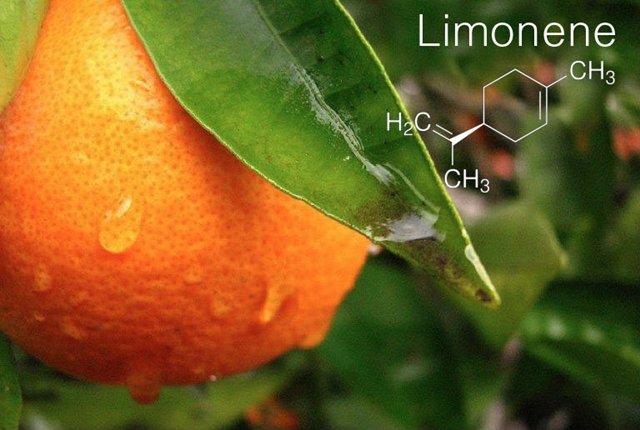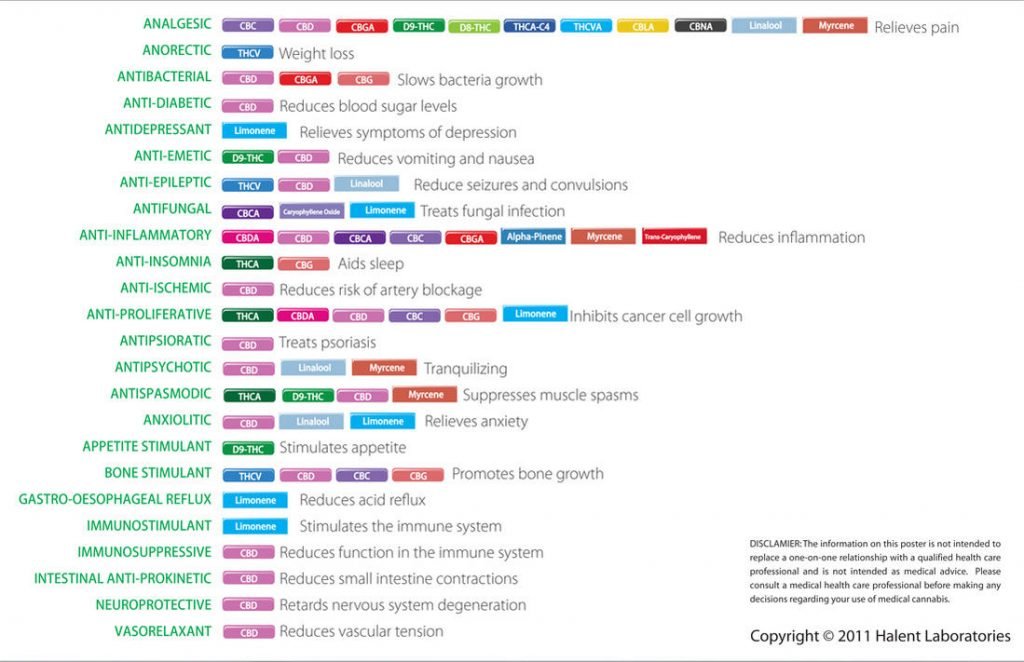Terpene Profile: Limonene
Formula: C10H16
Molecular Mass: 136.23404 g/mol
Boiling Point: 176 °C (349 °F)
Vapor Pressure: 1.50 mmHg ( 25 °C)
LD50 (Lethal Dose): Currently Unknown for humans, LD50 = >5.5g/kg for mice (Compare to Nicotine: for mice – 3mg/kg, for humans – 40–60 mg/kg)
Limonene is a cyclic monoterpene that has a pronounced citrus odor and flavor, somewhat sweet yet tangy and bitter. Unsurprisingly, limonene is most commonly found in highest concentrations in the rinds of citrus fruit. Most of the research on the medicinal effects of limonene have focused on d-limonene, rather than other constituents of limonene like perillyl alcohol or a-limonene. A terpene with a wide range of uses, limonene is a commonly used terpene in perfumes, household cleaners, food, and medicines. A major reason for limonene’s widespread use is its very low toxicity. While not being toxic to humans, a recent study done in the United Kingdom shows that allergic reactions to limonene and linalool are more common than previously thought. Limonene is a chemical precursor to the terpenoid Carvone, and may be related to α-pinene.
Limonene has numerous medicinal benefits including promoting weight loss, aiding digestion, and preventing gastric distress. It has been shown to be an anti-fungal agent, making it a natural remedy for athlete’s foot or outbreaks of yeast. Limonene also shows promise as a treatment for anxiety and depression. Most interestingly, limonene has been shown both to stimulate the immune system and be an effective treatment for cancer.
I am currently using a preparation of white vinegar, orange peels (limonene), lavender oil (linalool), and eucalyptus oil (various terpenes) to kill a mold outbreak in my house. These are all strong anti-fungal agents, but we’ll see if they prove strong enough for my needs (time will tell).
Therapeutic Uses
- Antidepressant – Relieves symptoms of depression.
- Antifungal – Inhibits the growth of fungus.
- Anti-Inflammatory – Reduces inflammation.
- Anti-Proliferative – Inhibits cancer cell growth.
- Anxiolytic – Relieves anxiety.
- Gastro-Oesophageal Reflux – Reduces acid reflux.
- Immunostimulant – Stimulates the immune system.
Credit: Mitchell Colbert at Leaf Online.



